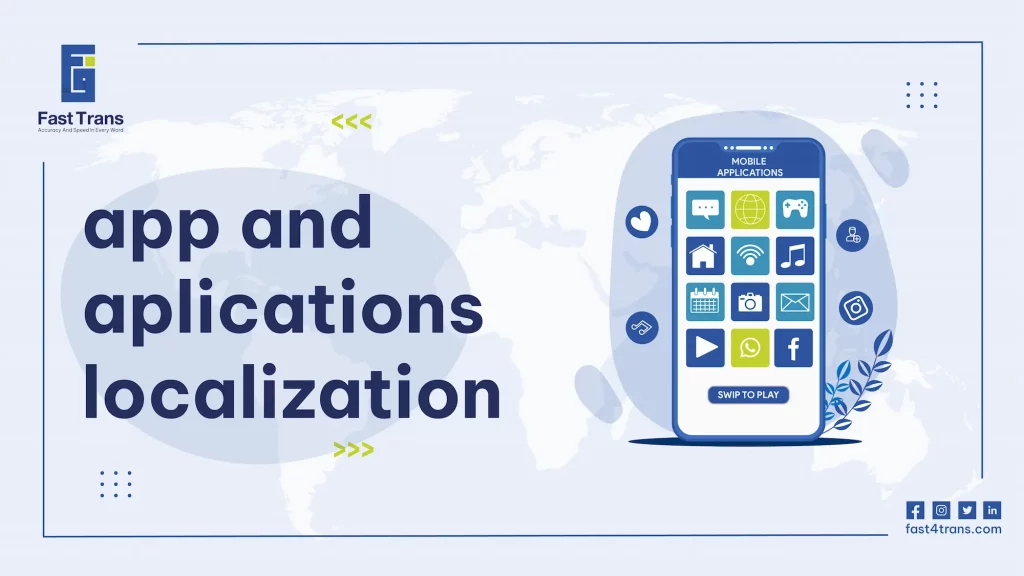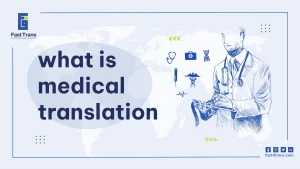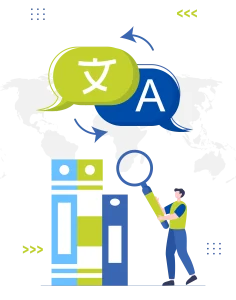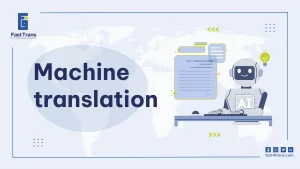Arabic app localization goes beyond simple translation, tailoring apps to the cultural, linguistic, and technical nuances of Arabic-speaking users. It ensures that everything, from currency and date formats to gestures and visuals, aligns with local preferences. By addressing cultural sensitivities and technical needs, localized apps boost user engagement, increase downloads, and improve app store rankings.
This strategic adaptation not only enhances user experience but also unlocks significant growth opportunities in the Middle East and North Africa, where businesses can connect more authentically with the market and expand their global reach.
What Is Arabic App Localization?
Firstly, Arabic app localization can be defined as ‘contextualized and culturally specific translation’ tailored to the Arabic-speaking audience. It is a form of translation that focuses primarily on the target language and its cultural context, rather than just translating from the source language. Arabic app localization transcends both language and cultural barriers, ensuring that the app resonates with users in the Arabic-speaking world.
For instance, when purchasing from an online store, you’ll notice that the app adjusts the currency depending on your location. If you are in Egypt, the pricing will be in Egyptian pounds, while in Saudi Arabia, it will display in Saudi Riyals, and in the United States, it will show in US dollars.
This is just one example of how Arabic app localization addresses all cultural factors, including language, images, terminologies, gestures, topics, currency, measurements, date formats, gender roles, legal requirements, time zones, and other culturally specific symbols.
Mobile app localization for the Arabic market can be broken down into three main areas: technical, cultural, and visual.
For example, in recent years, the popular discount season known as ‘Black Friday’ in Western countries has been changed to ‘White Friday’ in the Middle East. This is an example of cultural localization, as Friday is a religious day in many Arab countries, and the color black carries negative connotations in the Arabic language.
Another example is adjusting date formats according to regional preferences. For instance, some regions, including parts of North Africa and the Arab world, follow the (Day/Month/Year) format, while other regions, such as China and Korea, use the (Year/Month/Day) format. This technical aspect of localization ensures that the app is intuitive for its Arabic-speaking users.
Why Arabic App Localization is Important?
The main purpose behind mobile app localization is to provide a better user experience (UX) to potential customers, and in the case of Arabic app localization, it is even more crucial. A single error in translation can be a huge turn-off for Arabic-speaking customers, while getting cultural nuances correct can earn their trust and respect.
Arabic app localization can play a primary role in customer satisfaction, increasing app downloads, receiving better reviews, improving app visibility and ranking, and elevating conversion rates and engagement— all of which contribute to skyrocketing your business growth in Arabic-speaking regions.
A notable example of cultural sensitivity occurred in the early 2000s when Starbucks entered Saudi Arabia for the first time; it removed the ‘siren’ from its logo because it was considered offensive to Saudi women. Although the siren was later reintroduced, this move showed how localization in the Arab world can affect brand perception.
On the other hand, a negative example occurred in 2017 when Nivea launched a campaign in the Middle East with the slogan ‘white is purity,’ which was met with backlash due to its racist connotations. While this incident occurred in advertising and not mobile applications, it highlights the importance of localization in all aspects of business, including apps.
Understanding and respecting Arabic culture is key to successful app localization in this market.
Read more: Localization glossary
Types of Mobile App Localization
Mainly, there are two kinds of mobile app localization approaches: Minimum Viable Localization (MVL), and Full App Localization. Choosing any one of both depends on the business goals.
The MVl is a focused and to the point approach. It targets the things essential to be localized and leaves out minor things. Allowing for the app to be ready to function in the target market, while still minimizing costs. Yet this approach is not entirely comprehensive.
Unlike MVl, the Full App method provides a more personalized and culturally adapted experience on the app. The core difference between this and the MVl is that the Full App experience feel completely catered and in resonance with the target audience, as if the app was originally made in their region, and not localized. However, this approach is more expensive, and takes much longer to be implemented.
How to Arabic Localize Your App?
Before starting with the Arabic localization process, market research needs to take place in order to identify target Arabic-speaking markets.
After that, based on the research, your localization strategy will become 10 times easier. You will have a better grasp of which Arabic-speaking countries are the major targets. You will also find that there are some languages, such as Arabic, that are used across many countries in the Middle East and North Africa region.
You might also want to take a closer look at your competitors and what their customers are saying about the user experience on their Arabic-localized application.
Additionally, localizations require previous planning. For example, the application codebase, in the beginning, needs to be adaptable to future Arabic localization.
By mentioning codebase preparation, this process is known as SAAS Localization, which involves structuring a flexible software that allows for a smooth Arabic localization process.
Common Arabic App Localization Challenges
In mobile app localization, a translator or linguist working with different languages will often face the challenge of text contraction or expansion.
For example, when translating from English to Arabic, the text might expand by 25%, while it could contract significantly when translating to Chinese.
Another common challenge is cultural sensitivity. Even something as simple as color could be perceived as offensive to users in different regions.
When localizing from English to Arabic in an app, this becomes an even more complex task due to the need for right-to-left (RTL) text alignment. The entire app setup must be adjusted, including navigation and swiping, to accommodate Arabic’s unique text flow.
Overall, localization—particularly for complex applications like mobile games—can be a time-consuming and costly process that requires significant planning and extensive testing.
read more: What is Software internationalization and what to consider
Why Arabic App Localization is Vital for App Growth?
When approached correctly, Arabic app localization is the key to significant app growth.
Localizing your app for Arabic-speaking users in the App Store or Google Play will increase app downloads, as it speaks directly to native Arabic speakers. A localized app listing in Arabic can help expand your business on a global scale, especially in the Middle East and North Africa (MENA) region.
Additionally, app stores tend to recognize localized apps, and an app in Arabic is more likely to rank higher, attracting more attention and visibility.
Customers appreciate businesses that communicate in their native language and use a familiar tone. When your app provides that, the chances are higher that Arabic-speaking users will stay loyal.
Finally, this strategic adaptation can be highly rewarding, opening up significant opportunities for business growth and profitability in Arabic-speaking countries.
Read more: why should localize your digital marketing campaign
Tips for Localizing Your App
There are lots of best practices involved with app localization, below are some of the most important ones:
- -Translating to the target language correctly, while keeping in mind idioms and terminology in different cultures.
- -Changing currency if needed.
- -Changing time zones depending on location.
- -Assigning the correct language keyboard.
- -Do not embed text in images. This is because even images are involved in the localization process, customized, and personalized depending on the audience.
- -Second guessing symbols, icons, and visuals that are applicable in one country and could have a negative impact in another.
- -Conducting another keyword research optimized for the target audience.
- -Being mindful of hand gestures because they mean different things across cultures, one hand gesture with a positive connotation can be offensive in someone else’s culture.
- -Avoiding emojis that could be offensive.
For instance, the thumbs-up gesture-which means ‘okay’, or ‘good’ in the United States is actually offensive in a country like Iraq.
One of the best ways to avoid upsetting foreign customers, or getting laughed at, is by hiring natives who already know about these cultural specifics.
- -Implement App Store Optimization or (ASO) to improve the app ranking. This includes localization of app titles, screenshots, keywords, and descriptions.
- -Testing, Testing, Testing! Localization testing on a variety of devices is a must.
How Fast Trans can help in localizing your App?
Are you looking for a way to make your business strive in the MENA region?
Fast Trans company offers a variety of localization services, including App localization services. With its understanding of the importance of localization on businesses, and solid understanding of the challenges of localization, Fast Trans’ team of experts provide their clients with a stress-free localization process, coupled with an affordable price, that ensures in the end a smooth and cost-effective outcome.
Conclusion
Arabic app localization involves adapting a mobile application to meet the linguistic, cultural, and technical preferences of Arabic-speaking users. This process goes beyond simple translation, ensuring that factors such as currency, date formats, imagery, and even gestures are appropriately tailored to resonate with the target audience. It encompasses various aspects, from technical adjustments like right-to-left text alignment to cultural shifts such as renaming events like “Black Friday” to “White Friday” to suit local norms. This type of localization is crucial for businesses seeking to enhance user experience, increase customer engagement, and boost app visibility in the Arabic-speaking market.
Implementing Arabic localization can drive business growth in the Middle East and North Africa (MENA) region by improving app downloads and user retention. Localized apps are more likely to rank higher in app stores, attracting attention from native speakers who appreciate apps that communicate in their language and reflect their cultural context. A successful localization strategy takes into account both the cultural sensitivities of the region and the technical challenges involved, such as text expansion and app testing on multiple devices. Properly executed, it offers businesses a significant competitive edge and the opportunity to expand their reach in a rapidly growing market.











